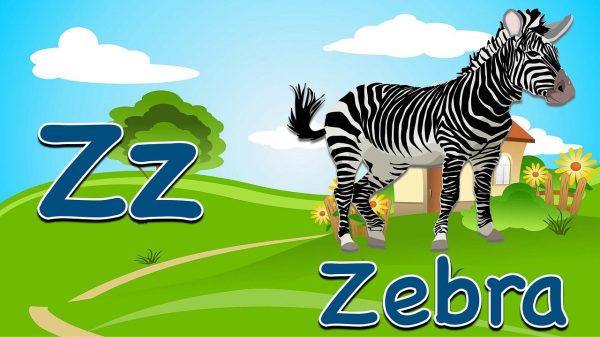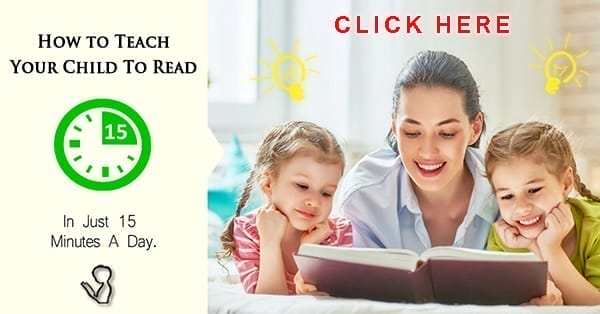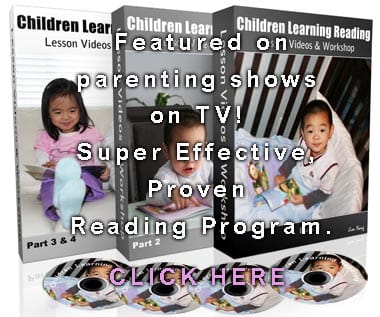Phonics for 2 Year Olds: Building the ABC Foundation
Welcome to the world of phonics for 2 year olds! Phonics is an important part of early literacy development. It is the foundation of reading and spelling. By teaching phonics, you can give your two year old a head start in learning the alphabet and beginning to read. In this introduction, we will discuss the basics of phonics and how to incorporate it into your two year old’s daily routine.

Introducing Phonemic Awareness to Your 2 Year Old
![]()
Introducing phonemic awareness to your 2 year old is an important step in helping them to develop the skills necessary to become a successful reader. Phonemic awareness is the ability to recognize, blend, and manipulate the individual sounds (phonemes) in spoken words. It is a crucial component of early literacy development.
For 2 year olds, introducing phonemic awareness activities should be a fun and engaging experience. Here are some tips for helping your child get started:
- 1. Start with Rhythm and Rhyme – Your toddler is likely already familiar with nursery rhymes and songs. Use this to your advantage and introduce activities that focus on the rhythm and rhyme of these songs. Play clapping games or have your child tap out the rhythm of a song.
- 2. Introduce Letter Names – Point out the letter names on signs, books, and other objects throughout your day. Make this fun by playing letter name games, like “I Spy a Letter” or “Let’s Find the Letter.”
- 3. Make Connections to the Real World – Use real-world objects and experiences to introduce phonemic awareness. Play a game of “What Sound Does this Make?” while you’re out walking or playing.
- 4. Use Manipulatives – Manipulatives are a great way to make phonemic awareness activities fun and engaging. You can use objects such as blocks, beads, or even food items to help your toddler explore different sounds.
- 5. Read Aloud Together – Reading aloud is one of the best ways to introduce phonemic awareness. Point out the different sounds in words as you read together and ask your child to repeat them.
By introducing phonemic awareness activities to your 2 year old, you’re helping to lay the foundation for success in reading and other areas of literacy. Remember to make it fun and interactive for your toddler to ensure the best results.
Teaching Letters and Sounds to Your Little One
![]()
If you are the parent of a toddler or preschooler, you may be wondering how to begin teaching your little one the basics of reading and writing. Starting with letters and sounds is a great place to begin.
First, you can start by teaching your child the names of each letter. This is an important step in their reading and writing development. There are many ways to introduce each letter, from using flashcards to creating fun activities.
Next, you can move onto teaching your little one the sounds of each letter. It can be helpful to use items in the house to create sound associations. For example, for the letter “F”, you can use a fan to create a sound like a “f”. You can also use items in the house to create a visual representation of the sound, such as a fire for the “f” sound.
Once your child has a basic understanding of the names and sounds of each letter, you can begin introducing simple words. You can start with three letter words such as “cat” and “dog”, and then gradually move up to longer words. It can also be helpful to use a variety of activities to reinforce what your child is learning, such as matching letters to words, finding words in books, and playing word games.
Learning letters and sounds is the foundation of reading and writing, so it is important to start early. Taking the time to teach your little one the basics of letters and sounds will set them up for success as they grow.
How to Teach Sight Words to 2 Year Olds
![]()
Teaching sight words to a two year old can seem daunting, but with the right approach, it can be a fun and rewarding experience. Sight words are important for helping your child develop their reading and writing skills, so it’s worth the effort to introduce them early. Here are some tips to make the process easier:
- 1. Start with a few words. When introducing sight words to a two year old, it’s best to start with just a few words. Choose words that your child can easily recognize and will come up often in their early reading.
- 2. Use flashcards. Flashcards are a great way to help your child learn sight words. Make sure to keep them simple and to focus on using pictures to help your child remember the words.
- 3. Read books. Reading books that include the sight words you’re teaching can help your child make the connection between the words and their meaning.
- 4. Make it fun. When teaching sight words to a two year old, it’s important to make the process fun. Use games and activities to keep your child engaged and make learning sight words enjoyable.
- 5. Be patient. Learning sight words can be a slow process, so it’s important to be patient. Try to create a positive learning environment, and give your child lots of praise when they get it right.
By following these tips, you can make teaching sight words to your two year old an enjoyable and rewarding experience. Good luck!
Step by Step Guide to Teaching Your Child to Read and Spell
![]()
Reading and spelling are key components of a student’s educational development. Teaching your child to read and spell can be a fun and rewarding experience. With a little patience and guidance, you can help your child become a successful reader and speller.
Step 1: Develop a Reading Environment
Create an environment that encourages your child to read. Make sure your child has access to books, magazines, and other reading materials. Read aloud together and talk about the stories you read.
Step 2: Teach Phonics
Help your child understand the relationship between sounds and letters. Teach your child the basic sounds of letters and how those sounds blend together to form words.
Step 3: Practise Letter Recognition
Help your child learn to recognize letters and their corresponding sounds. Play games that involve matching letters and words.
Step 4: Introduce Sight Words
Sight words are words that are recognized quickly and easily without having to sound them out. Teach your child the most common sight words and encourage them to practice reading them.
Step 5: Read Every Day
Reading aloud is an important part of developing your child’s literacy skills. Make reading a part of your daily routine and encourage your child to practice reading on their own.
Step 6: Teach Spelling
Help your child learn to spell by breaking down words and teaching the correct spelling of each word. Play games to help your child practice spelling words.
Step 7: Review and Reinforce
Review the skills your child has learned and reinforce them with practice. Regular review and practice will help your child master the art of reading and spelling.
By following these steps, you can help your child become a confident reader and speller. With patience and practice, your child will be able to read and spell in no time.
10 Fun Phonics Activities for 2 Year Olds
![]()
When teaching phonics to two-year-olds, it is important to make the activities fun, engaging, and developmentally appropriate. Here are ten activities that can help young children begin to learn phonics:
- 1. Sound Puzzles – Take two identical sets of puzzles and put a letter of the alphabet on each piece. Have your child match the two sets of puzzles to make a letter-sound match.
- 2. Rhyming Songs – Sing familiar songs and have your child identify the rhyme words.
- 3. Letter Matching – Cut out letters from magazines or old books and have your child match the uppercase letters with their lowercase counterparts.
- 4. Letter Sorting – Provide your child with a variety of letters in upper and lowercase and have them sort them into two piles.
- 5. Letter Tracing – Draw the letters of the alphabet on a piece of paper and have your child trace the letters with their fingers.
- 6. Sound Games – Provide your child with a variety of items that start with specific letters and have them identify the letter sound each item makes.
- 7. Letter Building – Provide your child with magnetic letters and have them build different words.
- 8. Alphabet Books – Read alphabet books with your child and have them identify the letters and their sounds.
- 9. Letter Hunt – Hide the letters of the alphabet around the house and have your child find them.
- 10. Letter Mirrors – Cut out a mirror shape from a piece of cardboard and have your child trace the letters of the alphabet on the backside of the mirror.
Teaching the Alphabet to Your 2 Year Old: What’s the Best Approach?
![]()
When it comes to teaching the alphabet to your two year old, the best approach is to make the learning process fun and engaging. Start by introducing letters one at a time, and use familiar objects to help your child relate the letter to the sound it makes. For example, when teaching the letter “B”, associate it with a ball and say the sound it makes when you hit the ball (“b-b-b-ball”).
You can also use letter recognition games to help your child learn the alphabet. Examples of these games include matching blocks with letters, tracing letters in the sand, or playing a letter hunt game, where kids search for letters hidden around the house.
In addition, you can use music and stories to help your child learn. Singing songs with the alphabet is a fun way to help your child recognize letters. You can also read books that focus on the alphabet to help your child learn the letter names and sounds.
Finally, it’s important to remember to be patient and consistent when teaching your child the alphabet. Children learn at different paces, so don’t get frustrated if your child doesn’t pick up the alphabet quickly. Praise your child for their accomplishments and offer encouragement so they will stay motivated.
With a little patience and some fun activities, your two year old can soon be on their way to mastering the alphabet.
Frequently Asked Questions
![]()
Q. What is phonics?
A. Phonics is a method of teaching children to read and write by connecting the sounds of spoken language with letters or groups of letters.
Q. How can I teach phonics to a 2-year-old?
A. It’s best to start with basic sounds and letter recognition. Have your child listen to you say simple words and repeat them back to you. Point to letters in books, on signs, or on flashcards and ask your child to identify them. Once they can recognize the letters, start to blend them together to form simple words.
Q. What activities can I do to practice phonics with my 2-year-old?
A. You can play matching games with letter cards, work on sounding out simple words, create stories with letter words, or recite nursery rhymes. You can also play letter puzzles and pick out items from a grocery list that start with a certain letter.
Q. What are some tips for teaching phonics to a 2-year-old?
A. Begin with simple words and the letters that make up those words. Make sure to keep lessons fun and engaging. Repetition is key, so practice the same words and sounds multiple times. Finally, give your child plenty of positive reinforcement and encouragement.
Q. How often should I practice phonics with my 2-year-old?
A. Aim for at least 10-15 minutes of phonics practice a day, broken up throughout the day in shorter chunks of time.
Q. How will I know if my 2-year-old is learning phonics?
A. You should be able to see progress with letter identification and sound blending. Your child should be able to recognize some words and start to form simple sentences.
Conclusion: Phonics for 2 Year Olds
![]()
Phonics is an important tool for 2 year olds to help them develop their early literacy skills. With the right guidance and instruction, young children can gain confidence in their reading and writing ability through phonics, helping to set them up for success in the future.



